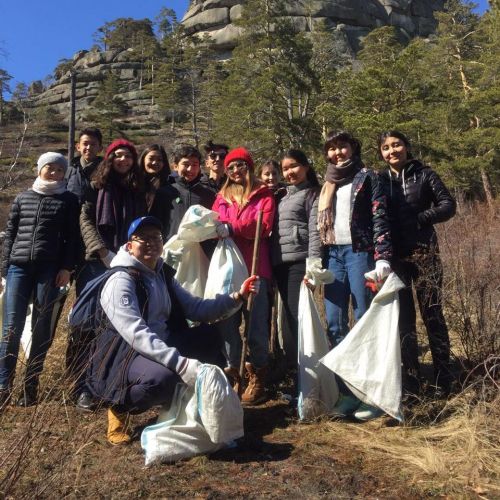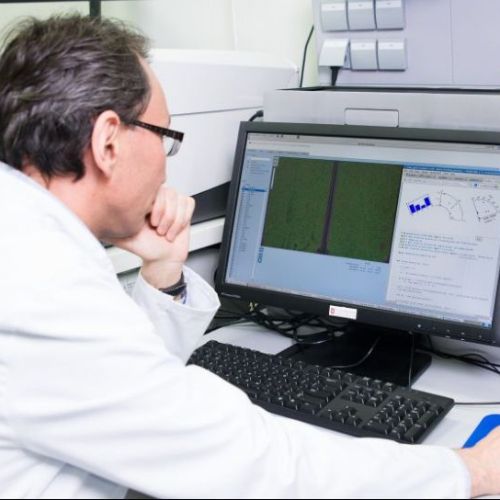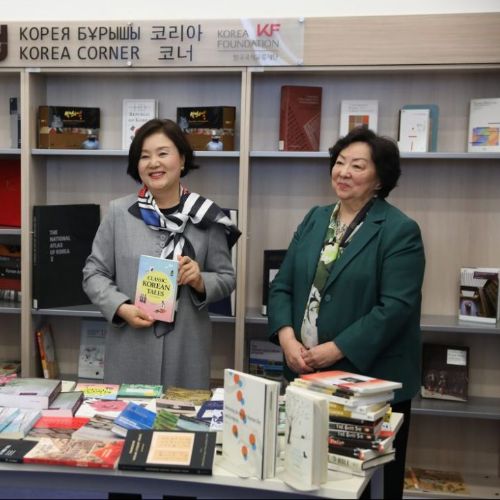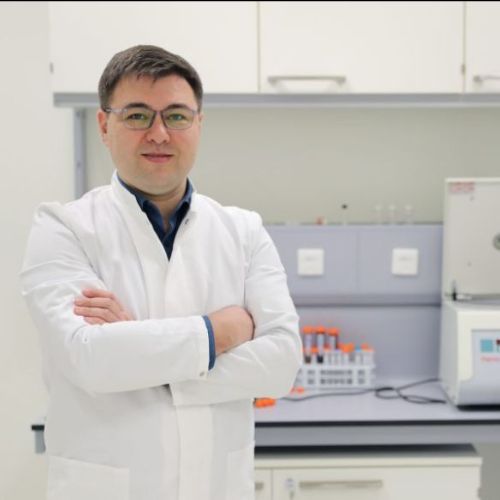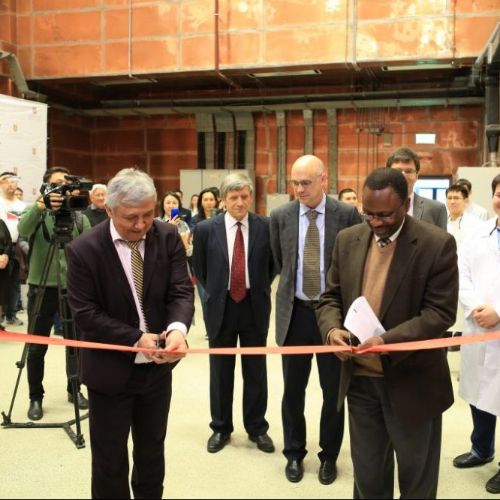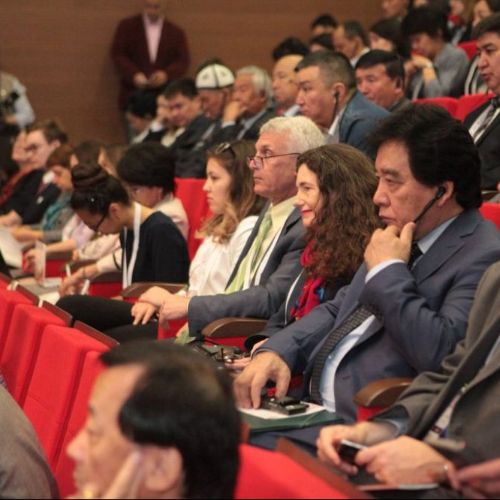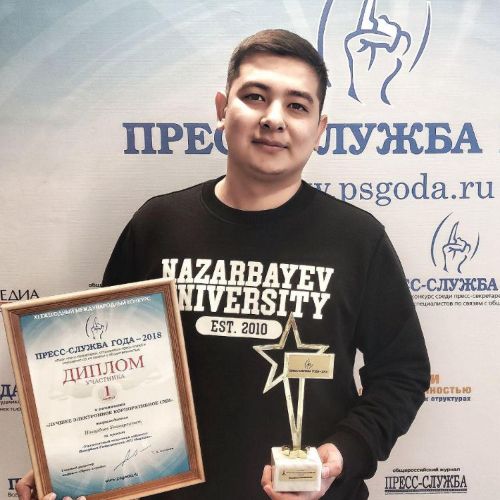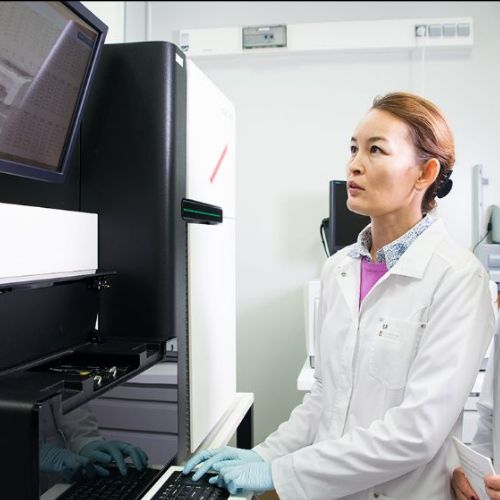
NU MAGAZINE
april 2019
CONTENTS
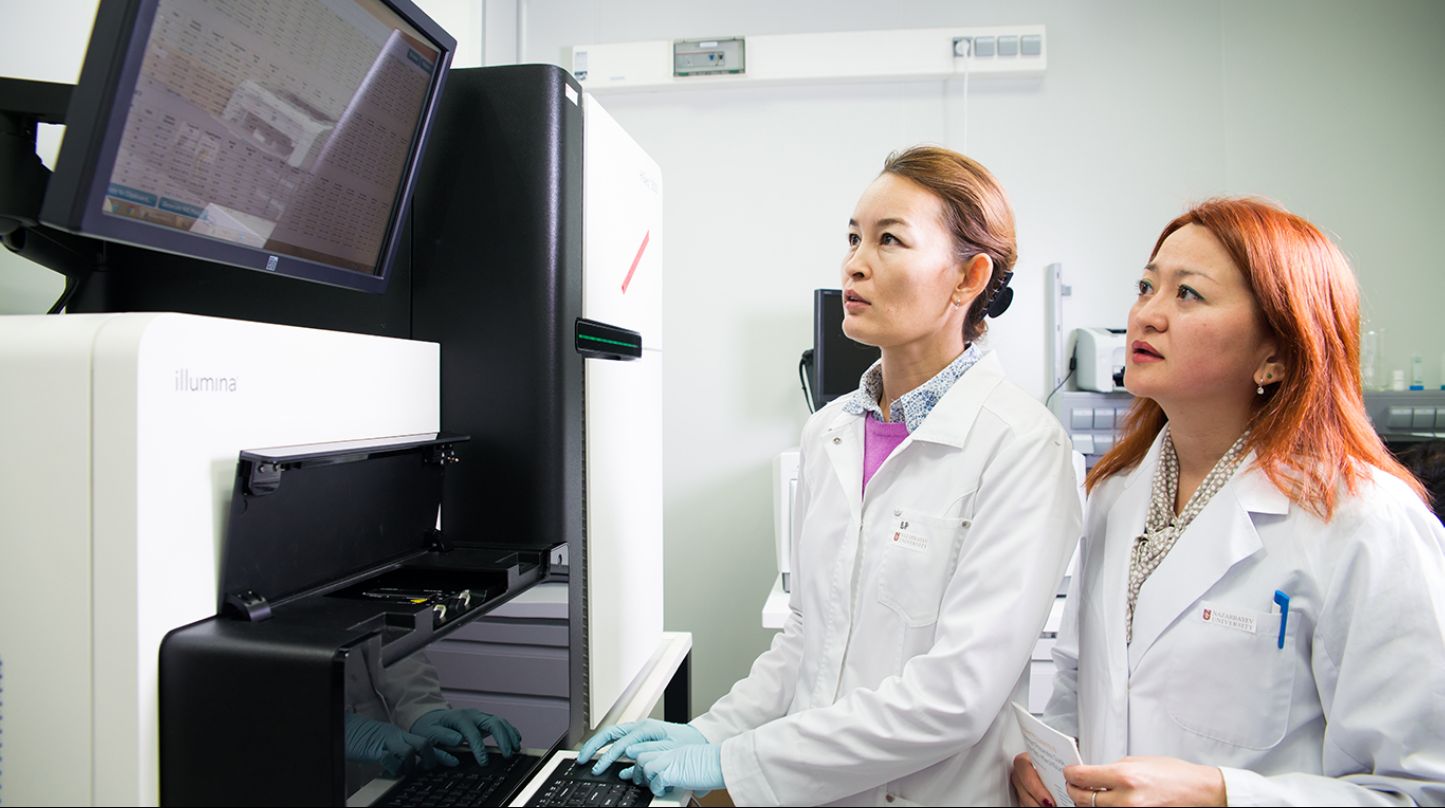
Sudden cardiac death: New genetic mutations discovered
Nazarbayev University researchers have discovered new genetic factors associated with heart failure and sudden cardiac death. Studying these genetic markers will help scientists to better understand heart disease, which could be used in the future to screen individuals for potential risks related to developing heart conditions. The results of this unique genetic research are published in the peer-reviewed scientific journal Plos One.
According to US cardiologists, sudden cardiac death is the cause of every fourth natural death worldwide. Sudden cardiac death is often due to the heart having problems pumping blood (ventricular fibrillation), or to sudden spikes in pulse with over 150-300 heart beats per minute (paroxysmal ventricular tachycardia of the heart)[1].
Analysis of electrocardiograms from patients who died of sudden cardiac death shows that in 83.5% of cases the deceased had either ventricular arrhythmias or less frequently bradycardia resulting in cardiac asystole. In about 5 to 12% of cases, sudden cardiac death occurred in previously asymptomatic and seemingly healthy people. Based on these data, scientists are convinced that ventricular arrhythmias are associated with a high probability of developing fatal arrhythmias or the so-called “sudden arrhythmic death” – where the reason for heart failure is not always apparent.
“Genetically determined diseases or channelopathies are associated with impaired flow of potassium or calcium ions in the muscle cells of the heart. They are also a major cause of heart failure and sudden cardiac death worldwide,” – says Ainur Akilzhanova, MD, Ph.D., Head of the Laboratory of Genomic and Personalized Medicine at National Laboratory Astana.
How do genetic factors and non-genetic factors such as environment and lifestyle affect the likelihood of developing heart disease? Might certain genetic mutations predispose people to sudden cardiac death? NLA genetic scientists attempted to answer these questions in a recent study of mutations of the ryanodine receptor-2 gene (RYR2). The RYR2 gene is one of the key players tightly regulating calcium ions (Ca2 +) efflux from the sarcoplasmic reticulum (a part of cardiac myocyte where calcium ions are stored) to the cytosol. Maintaining correct amounts of calcium ions throughout the body is important for heart muscle health and normal heart beating, and people with certain RYR2 mutations might have issues with proper calcium ion regulation. Mutations in this gene have been linked to an inherited disorder that could result in life-threatening irregular heartbeats called catecholaminergic polymorphic ventricular tachycardia type 1 (CPVT1).
In the framework of the project, scientists studied the DNA of 70 Kazakhstanis looking for genetic mutations of the RYR2 gene. Specifically, they examined the genes of 35 patients who had been diagnosed with different types of ventricular tachycardia and their family members. Nazarbayev University scientists have discovered two novel and previously unknown genetic variants that can influence the development of ventricular tachycardia. In addition, we identified a known variant previously associated with arrhythmogenic right ventricular dysplasia type2 (ARVD2).
Moreover, researchers evaluated the clinical significance of novel and rare genetic variants in the development of arrhythmias in Kazakhstani patients with diagnosed ventricular tachycardia and their healthy family members. These results will assess the risks of developing cardiac disease and sudden cardiac death in Kazakhstan and help doctors to develop measures for their prevention.
Dr. Akilzhanova noted that using genetic information to help treat CPVT is a fairly new approach that was not widely used until 2000. In 2001, the role of mutations of the RYR2 gene in the development of CPVT1 was first proved. Heart Rhythm Society and the European Heart Rhythm Association recommend early genetic testing of family members because CPVT may present as SCD or Sudden Infant Death Syndrome as the first manifestation. Nazarbayev University researchers emphasize that the clinical observation of patients carrying genetic factors will contribute to the understanding of further risk factors and their impact on the development of heart disease.
[1] The human heart consists of four separate chambers – the heart has a right and a left side, with upper (atria) and lower (ventricle) chambers. All four chambers play an important role in pumping blood.
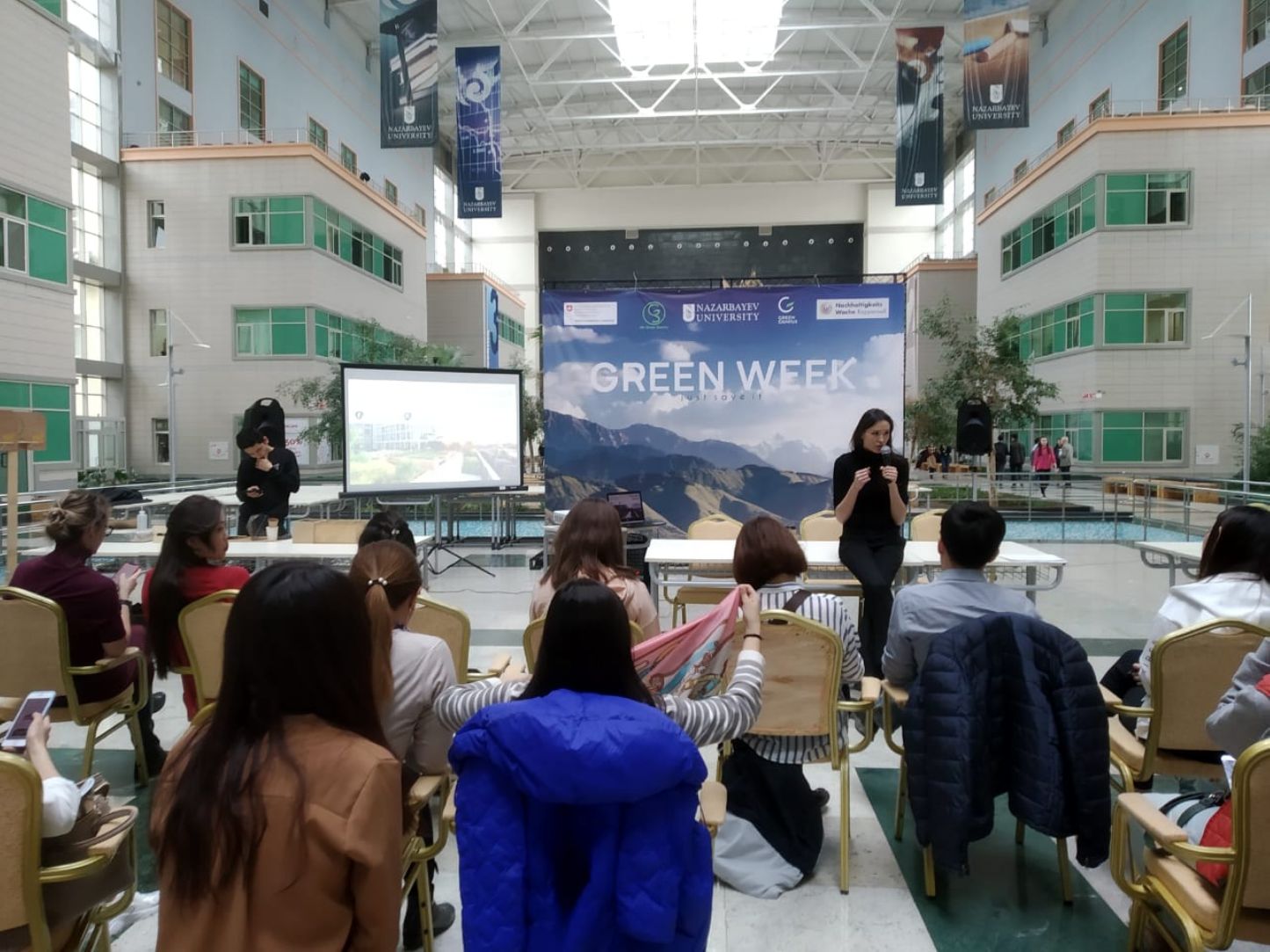
Environmental issues in the spotlight
Nazarbayev University marked the importance of caring about the environment during “NU Green Week” which was held at on campus from April 1 to 7. The event was organized by the student community NU Green Society with the support of the Embassy of Switzerland in Kazakhstan and the office of Green Campus. The main purpose of NU Green Week is to promote a culture of environmental literacy and draw attention to environmental issues.
Monday
On the first day of the event, eco-debates were held with the participation of Nomad club, a live performance from NU Drama Club and the release of booklets with eco-tips from NU Green Society. There was also a screening of the documentary “More than honey” about the life of bees and their mysterious massive die off in recent years around the world, about the related dangers that today’s communities face, and about the invaluable contribution bees make to human food production due to their pollination of crops.
Tuesday
At a seminar on waste sorting participants learned how to sort garbage correctly. Then they took part in an interactive exchange of waste paper and plastic for Green coins and valuable prizes. During the seminar, young environmental enthusiasts from the kindergarten № 68 “Bulak” wanted to show the adults how to take care of nature, which they did through a demonstration arts and crafts they made from used plastic bottles, paper, and utensils.
Experts shared their knowledge, ideas and experience on sustainable development at Eco-talks, which had the following themes: “Is there a future for bio-batteries?”, “What can the forest teach us in the field of Economics?”, “Do you really care about waste management?”, and “Qoqys – smart waste management system”.
Wednesday
On the third day of the event, NU Green week participants were able to donate and buy items at a Garage sale, organized jointly with the Children’s Development Foundation. The money raised at the sale was donated to charity. Also, those who wished to learn more about renewable energy were able to tour the university’s energopoligon. During the tour, visitors learned about the work of solar photovoltaic systems, wind turbines and thermal solar systems. Popular YouTube blogger and “Viner” Eldana Satybaldieva spoke about the importance of waste sorting and shared her experience of transition to living a green lifestyle. The day ended with an entertaining Treasure Hunt, during which students had fun and learned a lot of useful information about energy saving and “green” lifestyle.
Thursday
Experts on urban farming Irina PI and Maulen Akhmetov told about their experience of urban farming inside buildings. Special guests from bloomerang.kz demonstrated the process of creating beautiful florariums and gave advice on how to care for them. There was also a screening of the film “Sea Tomorrow” with the participation of the Director of the film Katerina Suvorova. This film is dedicated to the disappearance of the Aral sea, and highlights one of the most tragic disasters caused by humans. At the end of the film, the participants were able to ask the film’s Director their questions.
Friday
Students and staff of NU were able to taste culinary dishes at the Fair of vegetarian food, which was intended to spark interest in vegetarian food and get consumers to think about the link between their food choices and the environment.
Saturday
On Saturday, about 100 students of Nazarbayev University spent about 8 hours cleaning garbage from the Borovoe resort. The students formed several groups to collect and separate waste into different streams: plastic, glass, metal and general waste. The portion waste that was recyclable was set aside to be brought to the capital by environmental activists, so that the glass, plastic bottles, and cans may find a second life.
Sunday
The week ended with a master class on waste sorting at the shopping center “Asia Park” and participation in the plogging – a new sport that combines jogging and picking up litter – organized by the ECO-club Sparta Astana.
In addition, the photo exhibition “Qazaq Geography” ran the entire week at Nazarbayev University, dedicated to the unique nature of Kazakhstan. Most of the photos were taken during expeditions of the Kazakh Geographical society.
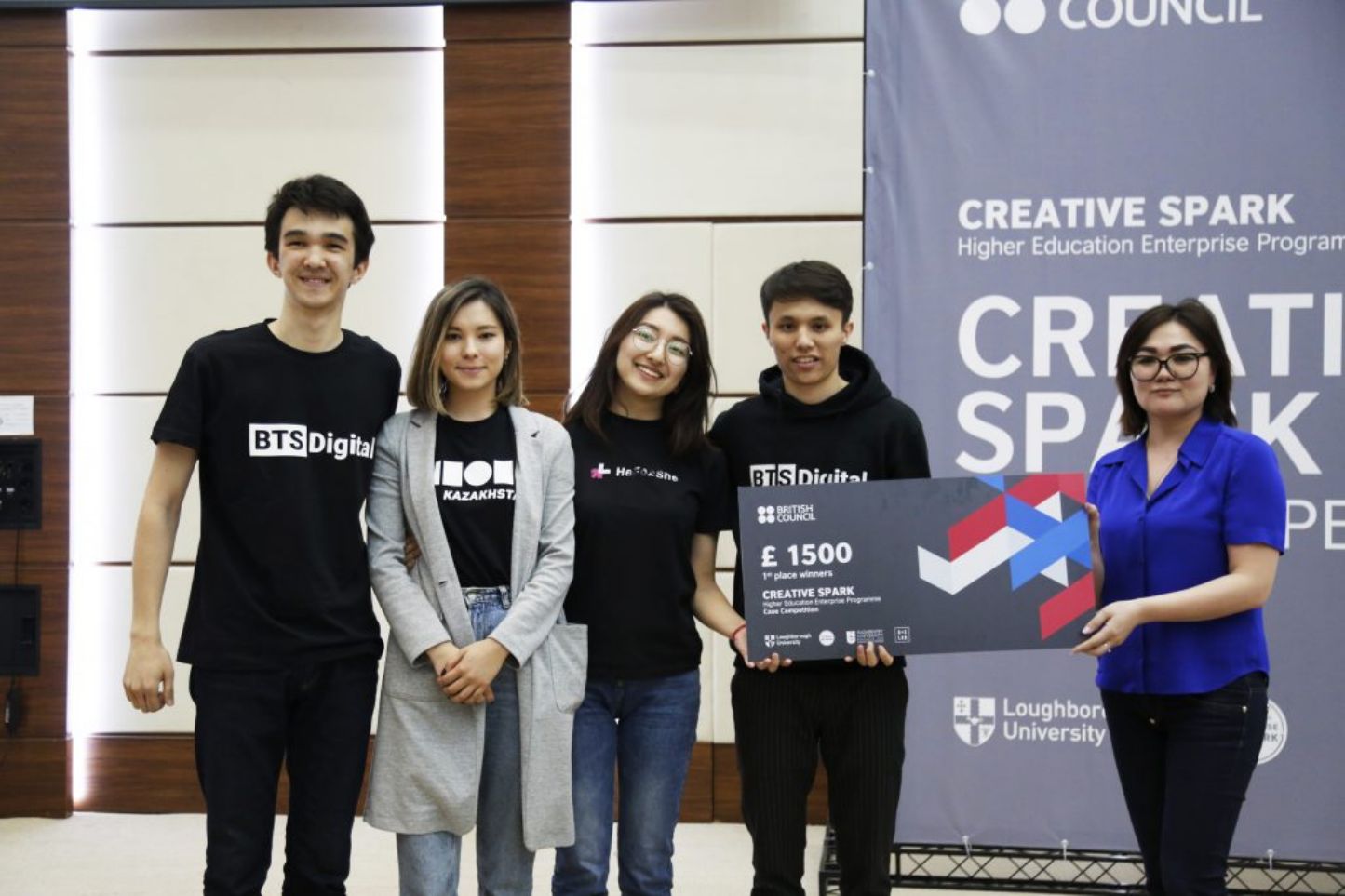
Creative Spark Case Competition Results
Within the framework of the British Council initiative for the development of entrepreneurial skills and creative economy on April 13-14 Digital Creativity Laboratory (NURIS) in partnership with Loughborough University held the Creative Spark Case Competition to solve a real existing problem among the students of Nazarbayev University.
The task, set by the Department of Marketing of NU, was to come up with an idea for one effective and comprehensive communication solution which would reduce the number of emails, paper usage and the overall informational noise.
Here are some amazing results we have got!
- 96 participants
- 24 hours of hard work
- 23 great original solutions
- 3,000 £ prize fund
1st place winners £1500 – Sanitary Check-Up Team
The team came up with the most holistic and resourceful solution, which was comprised of effective online and offline components. The solution offered machine learning news and emails recommendations feature.
2nd place winners £1000 – No Names Team
The team not only offered a solution but presented working website and social network like app prototypes integrated with Google calendar.
3rd place winners £500 – Enigma Team
The team offered a working prototype of an app that allows for different types of accounts, personalized content and integration with offline materials via QR codes.
Our Judges
Bolat Sultangazin, Business Accelerator, Director
Assel Uvaliyeva, Marketing Department, Director
Xenia Axt, Senior Manager, Marketing Department
Galina Koretskaya, British Council, Head of Arts and Creative Economy
Workshop on “Design Thinking”
A workshop on Design Thinking was delivered to participants by Dr. Antonius van den Broek from Loughborough University London to help them brainstorm ideas better
Workshop on "From Idea to Startup"
A workshop on how to transform an abstract idea into a clear plan and strategy was delivered by Magrifa Kamiyeva, strategy consultant.
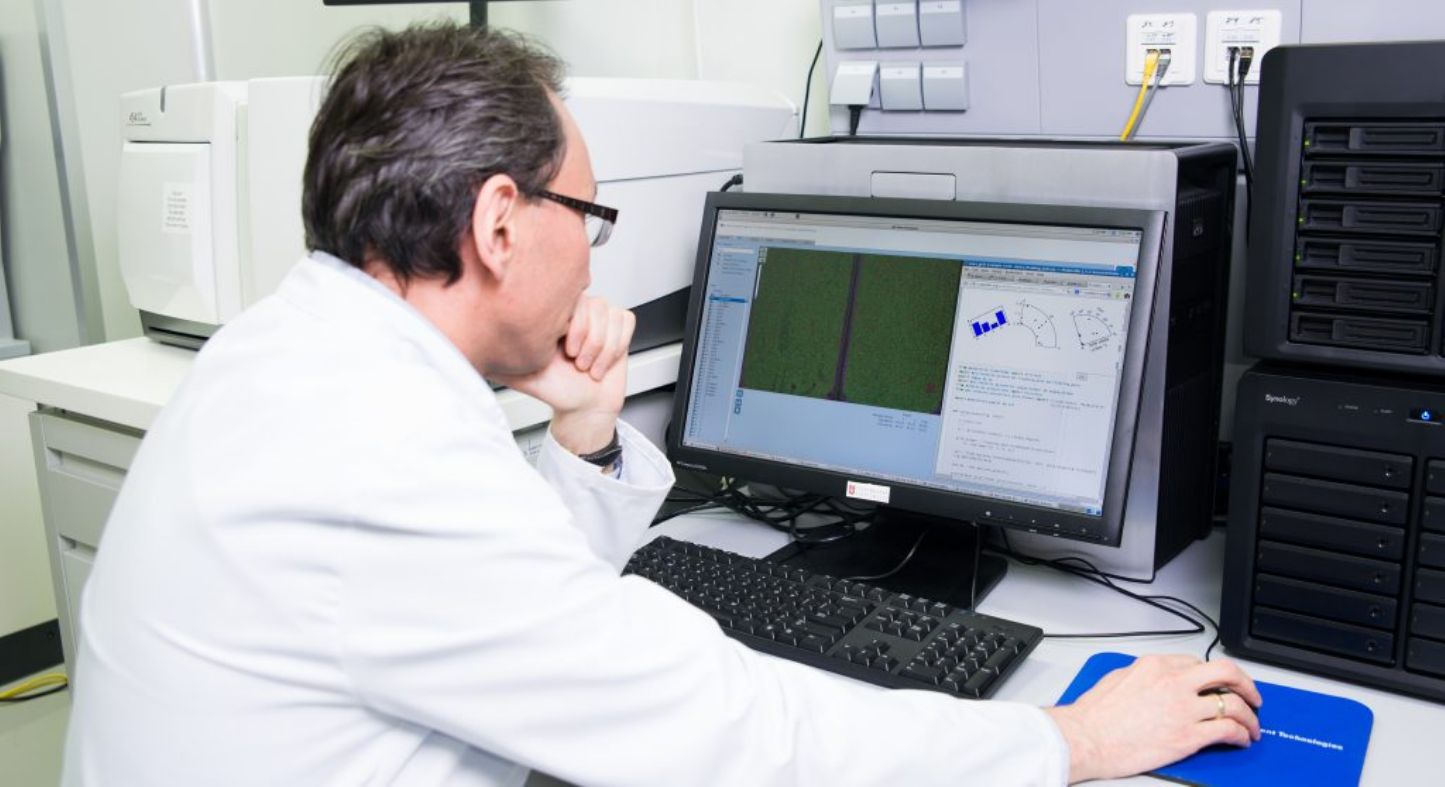
Drug-resistant M.tuberculosis strains are studied at NU
According to WHO data, every day about 4 500 people die from tuberculosis (TB) and 30 000 become sick with TB. Over the last decade, the medical community has faced difficulties in fighting tuberculosis due to the emergence of strains that are either extensively resistant to drugs or multidrug resistant.
Currently, Nazarbayev University scientists are conducting studies on tuberculosis, specifically examining how genetic level factors of tuberculosis may influence resistance to basic anti-tuberculosis drugs. After genotyping the clinical isolates to identify M. tuberculosis genetic families, scientists at the Center for Life Sciences, PI ‘National Laboratory Astana’, identified seven main genotypes of tuberculosis strains distributed in Kazakhstan.
W-Beijing family strains are the most commonly distributed kind in Asia and are associated with anti-tuberculosis drug resistance. We identified that this genotype prevails among cases of tuberculosis in Kazakhstan showing up in 60% of new cases and in 83% of recurrent cases. – reported Ulan Kozhamkulov, a leading researcher of the Laboratory of Genomic and Personalized Medicine, PI ‘National Laboratory Astana’.
Beijing family strains spread frequently in Asian countries, although today strains of this family can be found globally and prevail among young people. Strains of Beijing family were first identified during the 1990s in New York (USA) during an outbreak of multidrug-resistant tuberculosis. The strains in this family were named in 1995, when discovery of M. tuberculosis isolates with the same characteristics were found in ‘Beijing’ China, where 92% of all isolates belonged to this family. Among European countries, W-Beijing strains are mostly distributed in Eastern Europe and former USSR countries.
NLA researchers compared the genomes of clinical isolates of M. tuberculosis susceptible to anti-tuberculosis drugs with those of strains that are multidrug resistant and extensively drug-resistant. During the comparative bioinformatics analysis comparing the different strains, they found in the drug-resistant strains four common genetic loci (PE_PPE family genes) that were absent in the susceptible strains. Nazarbayev University scientists assume that these genes contribute to the extension of drug-resistant TB strains and may worsen disease symptoms of TB.
Now the scientists are planning to compare the results on drug-resistant Kazakhstani strains with data available in international databases. This analysis will help in understanding the mechanisms of tuberculosis resistance to anti-TB drugs and contribute to the development of improved tuberculosis diagnostics, vaccines and new anti-tuberculosis drugs.
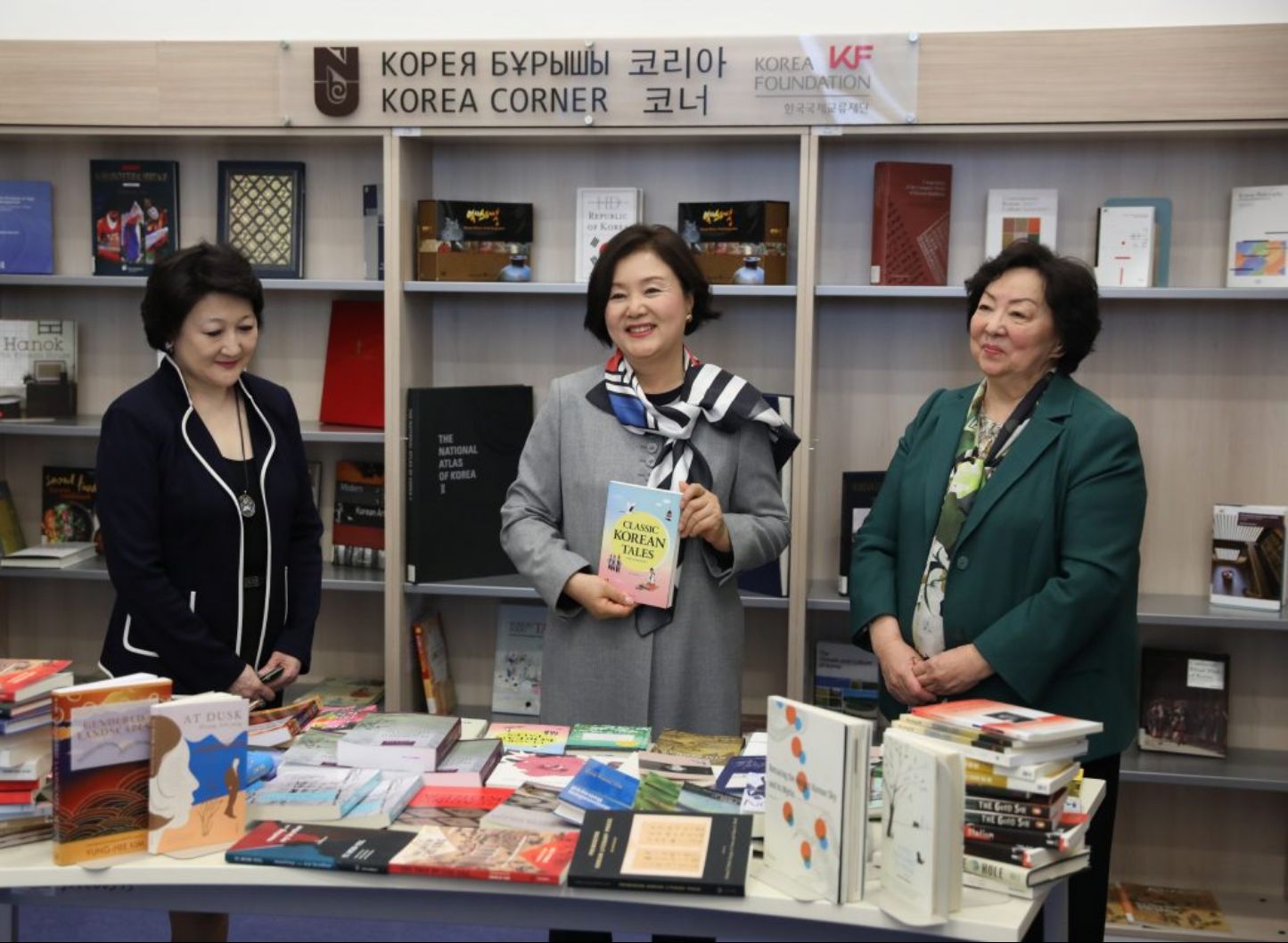
First Lady of Korea Kim Jung-sook visited NU
Kim Jung-sook accompanied her spouse Moon Jae-in, President of South Korea during his state visit to Kazakhstan. First lady came to the university yesterday, where she was warmly welcomed by Mrs. Kadisha Dairova, NU Vice-President for Student Affairs and International Cooperation.
First, the guests met with NU students and watched the performance of the Yeboseyo K-pop cover dance club. Then Kim Jung-sook proceeded to the Korean corner in the NU Library, where she got acquainted with NU staff members, students and NU Faculty from Korea and their families. Kim Jung-sook made a personal donation of 100 Korean books to NU Library.
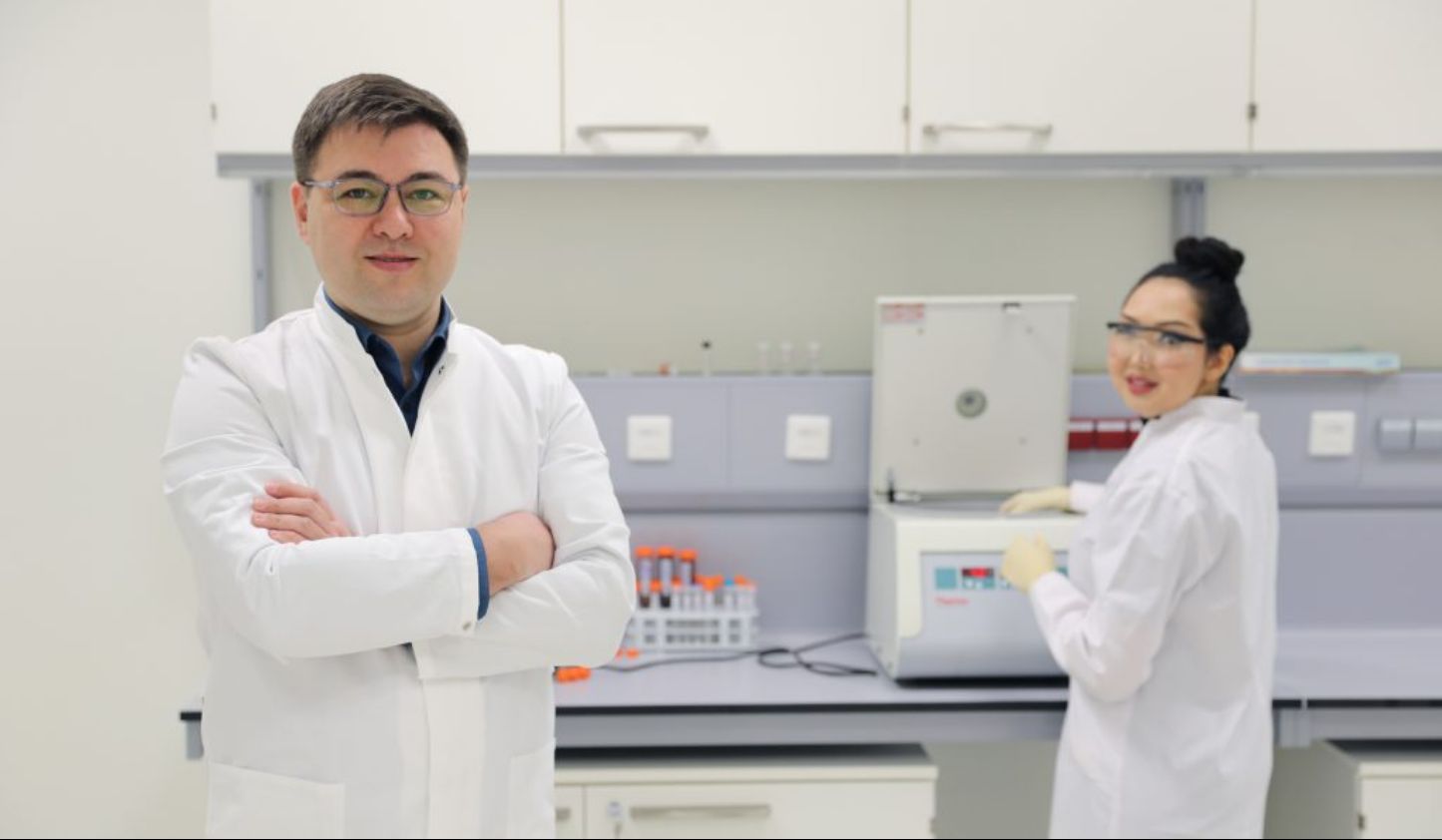
It’s closer than we think
Last year, Dr. Timur Atabaev received a very prestigious Scopus Award — “Young Researcher Award 2018”. Dr. Atabaev is an Assistant Professor of the NU School of Science and Technology, whose research interests include studying the synthesis and characteristics of multifunctional inorganic nanostructures for applications in biomedicine, energy, and photocatalysis. Recently we interviewed Dr. Atabaev all about his work and research related to Nanotechnology.
– Timur, could you please reveal the secret of popularity of nanotechnology in modern research?
– About two decades ago, many leading international universities and companies began to actively fund research projects in the field of nanotechnology. Much of this research was focused on the exceptional practical properties of nanomaterials, such as strength, conductivity, as well as magnetic, optical and catalytic properties. The nano-level is one of the smallest units because less than the nano-level are molecules and atoms of which these nanostructures consist. A large portion of today’s nanotechnology market consists of electronic components. These are things such as thin-film based technology for computers and phones, magnetic hard disk drives, nanosensors, etc. Another part of the market is occupied by products of the pharmaceutical, cosmetic and chemical industries, i.e. absorbents, sunscreens, antibacterial agents, wear and corrosion-resistant coatings, membranes for water purification and neutralization of gas emissions, catalysts for the industry, etc. In addition, there are a lot of other examples where nanotechnologies can be very useful, for example, green energy, ecology, medicine, and in the food and agricultural industry.
– As far as we know, you are working on the application of nanotechnology in oncology.
– Yes, currently I am part of a team with several researchers from South Korea that is working to create nontoxic multifunctional nanoparticles that can predominantly attach to cancer cells for controlled drug delivery and destroy cancer cells under the infrared radiation. Why it is important? The fact is that today, many procedures for diagnosing and treating cancer around the world involve using chemical contrast agents that possess a number of undesirable side effects. In particular, they poison the body with toxic elements. For example, during the scanning procedure, the wife of a famous American actor Chuck Norris was exposed to a high concentration of gadolinium-based contrast agent and experienced terrible side effects, in some cases, exposure to such agents can even prove fatal. Our research could help to minimize undesirable side effects and cure cancer patients more efficiently.
– At which stage is your research now?
– We tested a large number of different nanoparticles for toxicity and identified several biocompatible materials suitable for our tasks. Now our group is working on optimizing several parameters at once: these are nanoparticle size, mesoporosity, nanosystem stability and reproducibility of results. As soon as we finish the optimization of parameters, our partners will proceed to preclinical studies. It should be noted that preclinical and clinical studies may take a long time, but we are quite optimistic.
– Dust is a big environmental problem in our city. Today, the capital’s markets has offers of nanosets for windows that protect houses from dust intrusion. Are they really effective?
– Nanostructures have been used for water purification for a long time, usually in filters and membranes, and air can also be cleaned with nanoscreens. Nanoscreens actually are made from nanosized polymeric fibers. Due to the small size of the holes between the fibers, larger dust particles will not be able to enter the room and remain on the surface of the window nanoscreen. By the way, consumers in South Korea are able to buy a protective plastic film with nanoparticles to protect themselves from electromagnetic radiation of mobile phones.
– What equipment do you use in your research?
– Nazarbayev University has a very good laboratory base, which allows us to conduct complex research in the field of nanotechnology. We often work with an X-ray diffractometer and electron microscopes in the new C-4 Building. In addition, we actively use infrared, UV-visible, and fluorescent spectrophotometers, which are housed in our school. I would like to note that expensive equipment is not always necessary for nanotechnology. Last summer, my colleagues and I conducted open presentations for schoolchildren, where they were shown how to use fluorescent carbon nanoparticles to detect lead ions Pb (II) in water. It is well known that lead is an extremely toxic element for the human body, and can often be found in drinking water. But, not everyone knows that lead detection in water can be achieved with carbon nanoparticles made from ordinary sugar. We demonstrated how to use ordinary sugar to make these carbon nanoparticles. Prepared carbon nanoparticles have green fluorescence under ultraviolet light excitation. Even in the presence of a small amount of lead ions in the water the green signal is fading out. Other metal ions besides lead in the water do not affect the fluorescent properties of these nanoparticles. This is one example of how to conduct a quick, selective, and inexpensive analysis of water samples for the presence of lead ions. And yes – this is also nanotechnology.
About the speaker: Timur Atabaev received a PhD degree from the College of Nanoscience and Nanotechnology at Pusan National University in 2012. From 2012 to 2017, he had worked as a research professor at the Pusan and Seoul National Universities (South Korea). Dr. Atabaev has been teaching at the School of Science and Technology of Nazarbayev University since 2017.
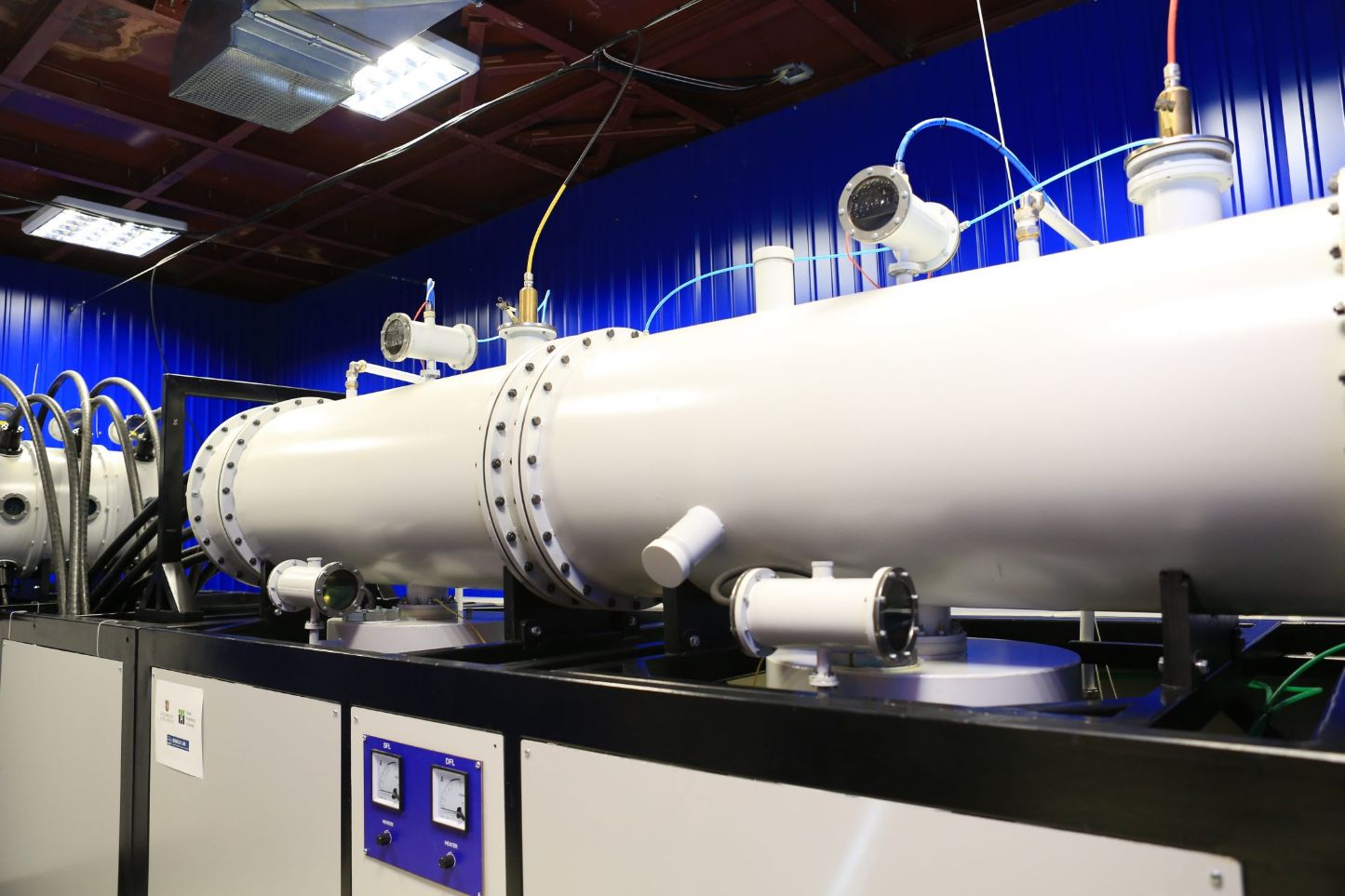
Nazarbayev University presented the INURA pulse high-current ion accelerator
On April 26, 2019, a new research complex based on the INURA (Innovative Nazarbayev University’s Research Accelerator) pulse high-current ion accelerator launched at Nazarbayev University. The construction of the ion accelerator is the result of trilateral cooperation between Nazarbayev University (Kazakhstan), Lawrence Berkeley National Laboratory (USA) and National Research Tomsk Polytechnic University (Russia).
“We created a truly unique installation, which we developed with the best experts in this field from around the world. This technology has already shown its relevance, both in Kazakhstan and abroad. The INURA accelerator was created as part of the successful implementation of the five-year scientific and technical program ‘NU-Berkeley Strategic Program for the Study of the Critical State of Matter, Advanced Materials and Energy Sources’ funded by the Ministry of Education and Science of the Republic of Kazakhstan”, noted the NU President’s advisor Dr. Kanat Baigarin. Dr. Kanat Baigarin together with Dr. Alexander Tikhonov, Assistant Professor at the School of Science and Technology of NU and Dr. Marat Kaykanov, NU researcher, are the leaders of the NU research team on the creation and launch of an accelerator.
On the same day as the opening, Nazarbayev University held an international seminar was the participation of representatives of the Lawrence Berkeley National Laboratory (USA), the National Research Tomsk Polytechnic University (Russia), the Institute of Nuclear Physics, the Eurasian National University and the Kazakh National University. At this seminar they discussed the results of the first experiments conducted with the INURA accelerator, on the application of pulsed beams for the modification of transparent conductive coatings, the synthesis of nanopowders, structural modification of nanomaterials, as well as the study of charge neutralization of the beam of nanosecond duration of the bulk plasma.
Participants discussed the further development of the INURA accelerator and future joint scientific projects, applied research and work. The main speakers of the seminar were Dr. Alessandro Ratti and Dr. Thomas Schenkel (USA), Professor Gennady Remnev (Russia), SST Assistant Professor Alexander Tikhonov and SST Postdoctoral Scholar Marat Kaykanov (Kazakhstan).
About the accelerator: INURA is a high-current pulsed ion accelerator, developed to be multi-purpose and used in both theoretical and applied research. It provides a 10 000 Amperes ion current in 80 nanoseconds, with ion energy of 400 keV. This technology can modify a material’s structure and properties. INURA, will not only modify, but will also fabricate new advanced materials ranging from solid bulk to nano. Additionally, the INURA accelerator will be used for plasma and charged particle beams studies.
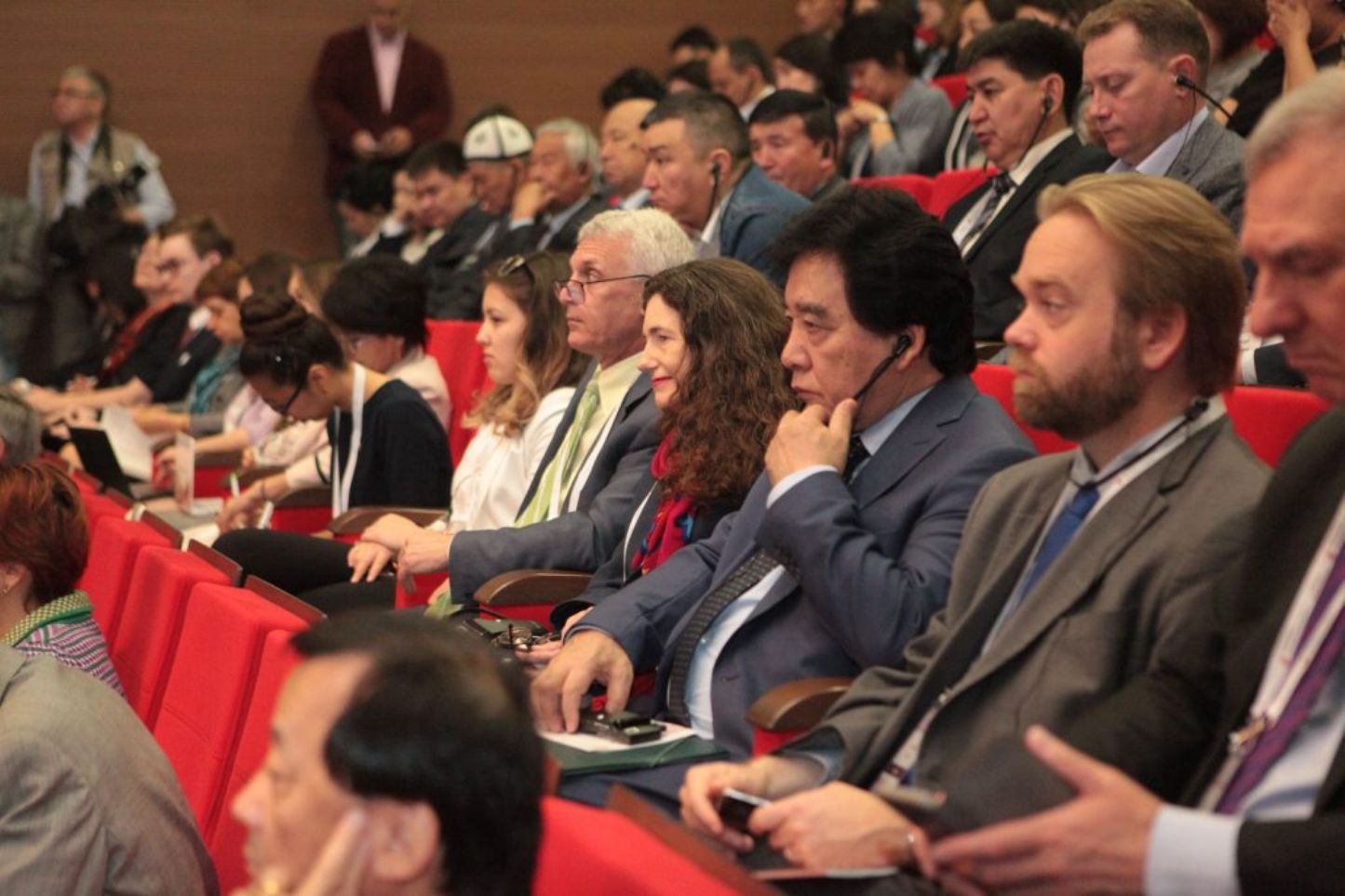
Nazarbayev University will host participants of the VIII Eurasian Forum of Higher Education Leaders
On June 6-7, the VIII Eurasian Forum of Higher Education Leaders will be held in Nur-Sultan city. The forum is held annually at Nazarbayev University. The theme of this year’s Forum is “Future Ready Graduates”.
“We believe that together with our participants and speakers we will find an answer to the question of what the future graduates should be. We will discuss the qualities and skills that young professionals need to have, ” said Loretta O’Donnell, Vice Provost of Nazarbayev University.
Aida Sagintayeva, Dean of the Nazarbayev University’s Graduate School of Education, believes that in the rapidly changing world that universities will need to rethink the way they educate students so that the knowledge received at university stays relevant. It is extremely important for universities to develop essential skills in students so that future graduates will remain competitive, especially in light of advances in technology and artificial intelligence. In the near future, universities will have to respond to new challenges. The architecture of higher education systems will change so that traditional forms of education will be revolutionized and the out-of-date parts will remain in the past.
The Forum participants will include top-managers of universities of CIS countries, Asia, Europe, the USA, as well as representatives of national and international companies. Participants will discuss the changing labor market and new challenges facing higher education. Additionally, the forum will focus on lifelong education, the importance of educating future leaders in terms of civil society, and the formation of an industrial-academic ecosystem.
Briefly about the Forum:
The forum has been held annually for eight years.
The theme of the forum last year was “Innovating Higher Education in the Age of Disruption”.
More than 30 forum speakers represent eight countries: Kazakhstan, Russia, Sri Lanka, USA, Singapore, UK, China, Thailand.
Interesting facts about some Forum speakers:
Tan Eng Chye, President, National University of Singapore (University #1 in Asia and #23 in the world rating of the Times Higher Education)
Tian Xu, Vice President of Westlake University (China), first private research university in China. Today the university works on attracting the best Chinese researchers from overseas.
Kenn Ross, managing director of Minerva Project, which is a University that doesn’t have a campus. Students study in seven countries. Last year, Minerva’s acceptance rate was 1.9% which is lower than in the Ivy League universities.
Emin Askerov, a social entrepreneur. In 2015 he founded the social workshop “Green TAL”. Emin founded the first School of Social Entrepreneurship in Nur-Sultan city. He participated as an expert on social entrepreneurship in international forums of Russia (2016), India (2017). Nominee of the Open World program for sharing experience among social entrepreneurs. (California, USA 2015).
Leila Akhmetova, a student at Nazarbayev University, head of the organizing committee of the HPAIR international conference (The Harvard Project for Asian and International Relations), the largest student conference under the auspices of Harvard University in Asia. For the first time in history, the Harvard Conference will be held in a CIS country. A team of Nazarbayev University students won the right to hold the conference at the end of 2018 beating such countries as Japan, Singapore, China etc. It is symbolic that the event will take place in the year of Kazakhstan’s youth and will address the most pressing issues for the younger generation.
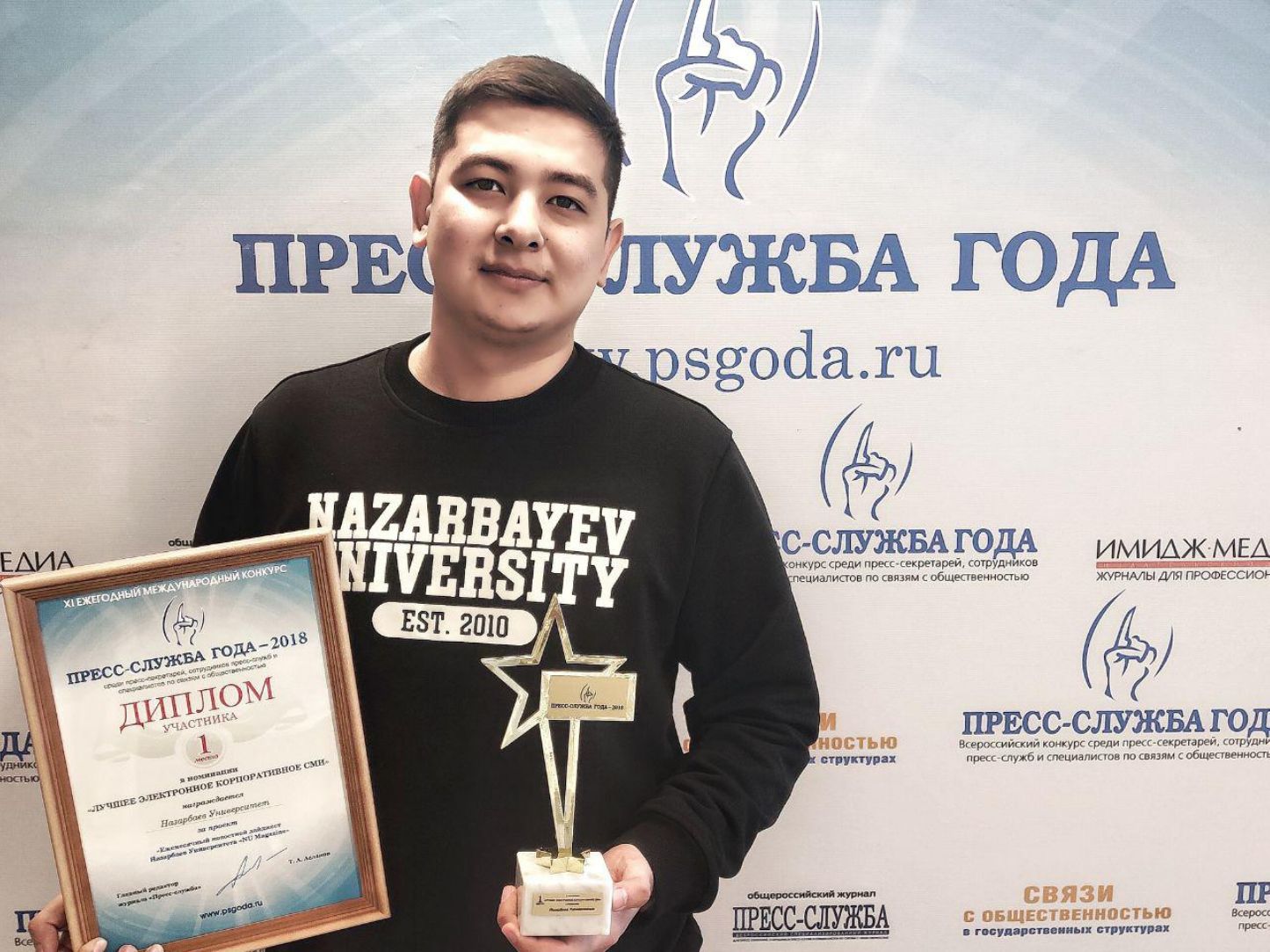
We are the winners!
The "NU Magazine" news digest won the XI annual international competition "Press Service of the Year - 2018" in the nomination "The Best Electronic Corporate Media".
Our team:
Nurlan Ismailov - Designer
Madina Kakimzhanova - Chief Editor
Kymbat Iskakova - Editor
Dinara Kussain - Editor
CAC NEWSLETTER
Dear NU community,
We are happy to present the latest issue of the CAC News Digest.
Click here
© 2019 Press Office
